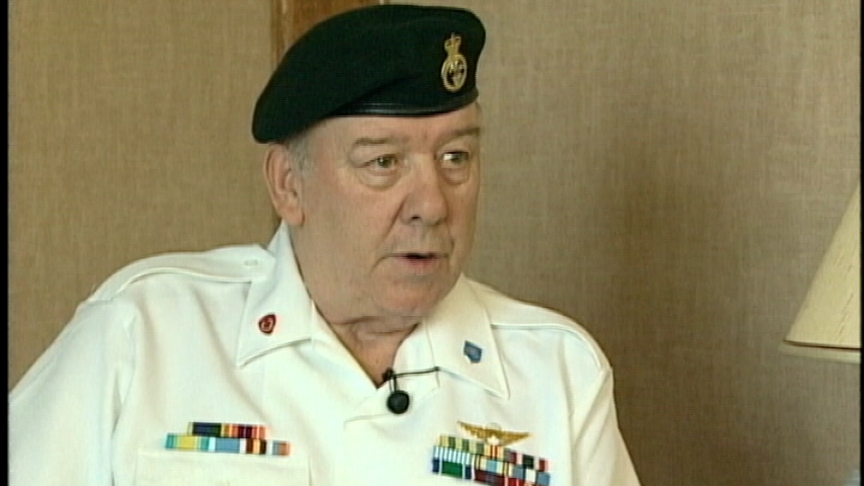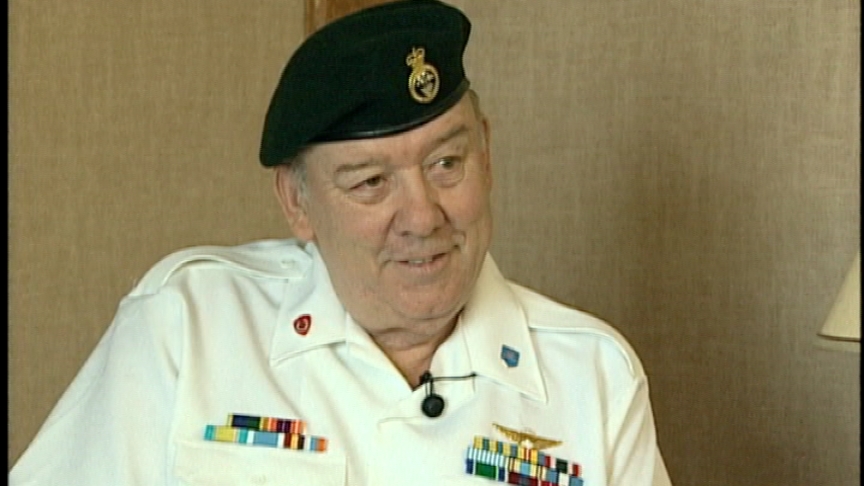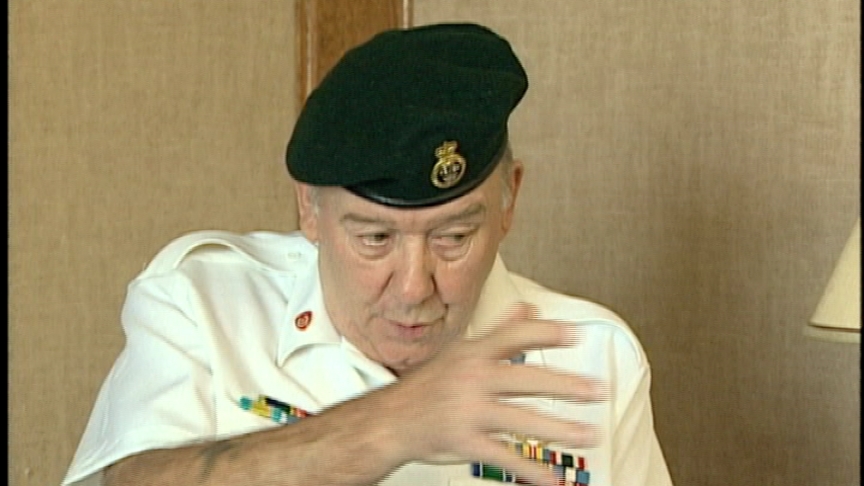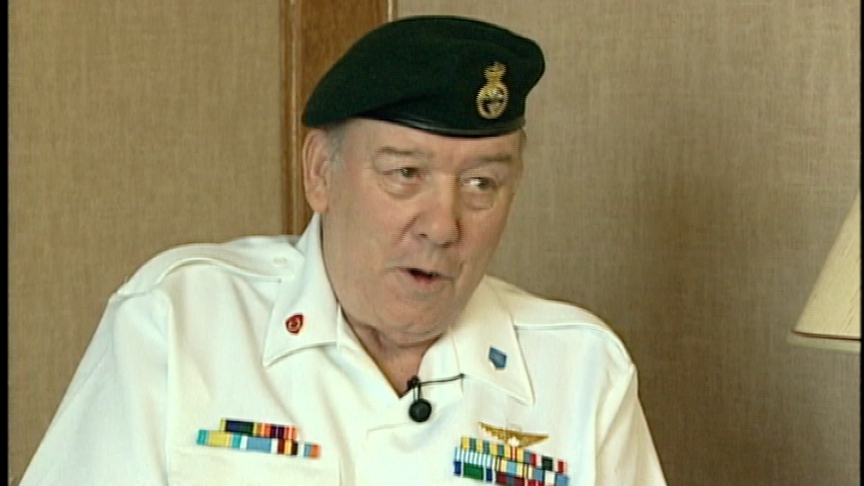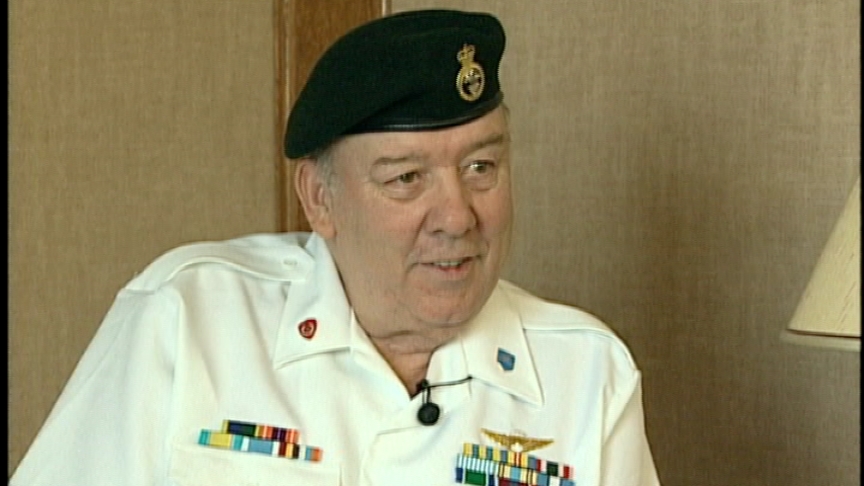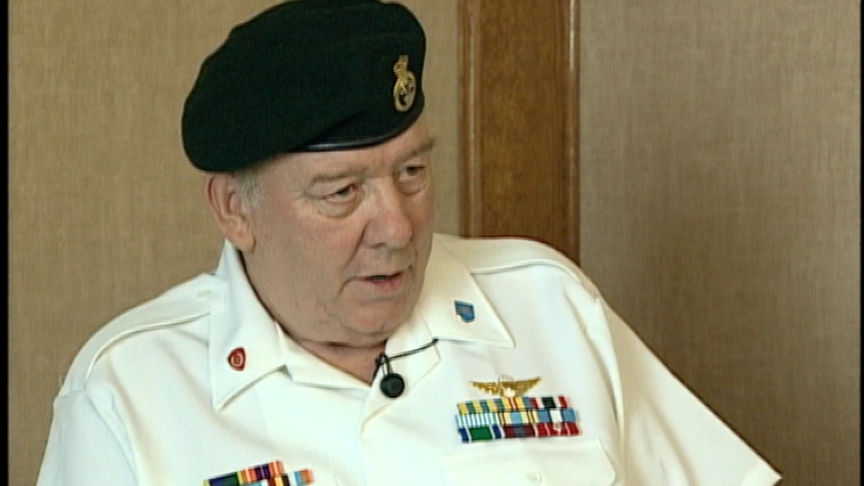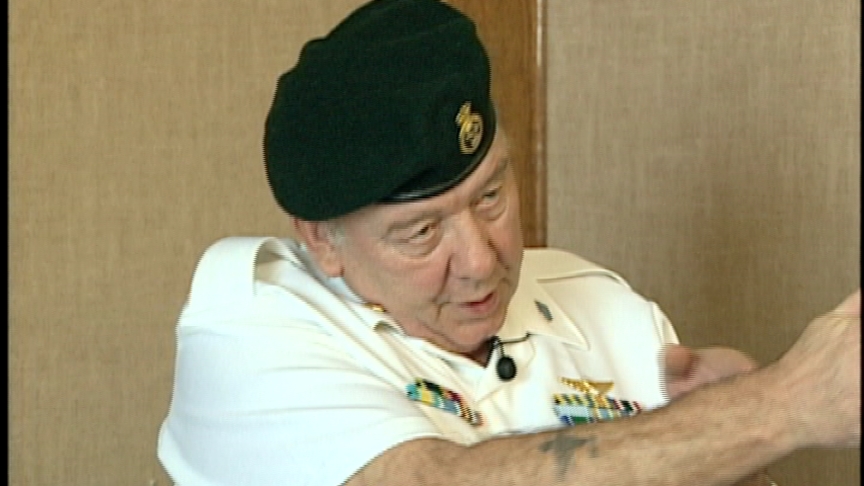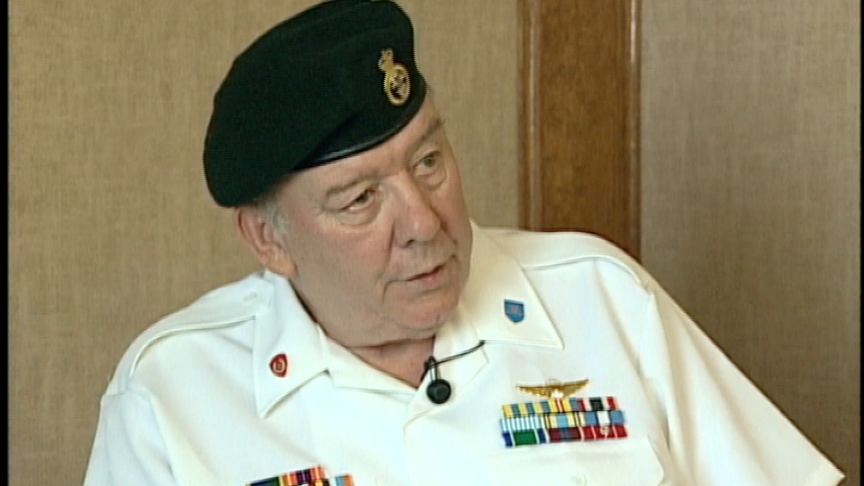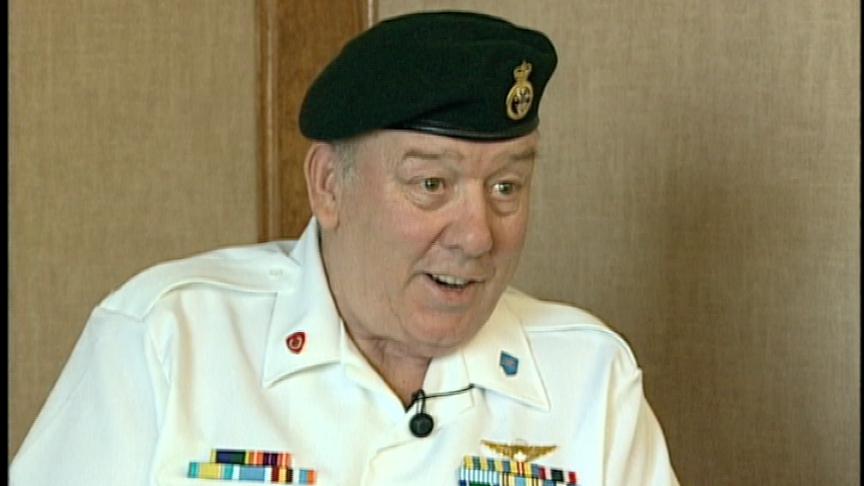Dangerous Night Patrols
Heroes Remember
Dangerous Night Patrols
Transcript
Description
Night patrols were essential operations but were always dangerous. Mr. Nickerson describes his first experiences on a night wire-laying patrol.
Ray Nickerson
Mr. Nickerson's father was a farmer and Veteran of the First World War. Mr. Nickerson was the second youngest of 10 children. Three of his older brothers served in the Second World War. He left school at the age of 16 and enlisted in the army with the PPCLI. His parents were not happy with this. After enlisting, Mr. Nickerson went to Curry Barracks in Calgary for basic training. He did his advanced training in Curry and in Wainwright, Alberta. In November 1950, his battalion was told they were going to Korea to serve with the U.N. force. Mr. Nickerson saw action near Pusan, Seoul and at Kapyong. While in Korea, Mr. Nickerson was wounded by a land mine. He was hospitalized for nine weeks. After his recovery, he returned to the front . Mr. Nickerson's tour of duty ended late in 1951 and he returned to Canada. He remained in the Canadian Army until his retirement in 1968.
Meta Data
- Medium:
- Video
- Owner:
- Veterans Affairs Canada
- Duration:
- 03:00
- Person Interviewed:
- Ray Nickerson
- War, Conflict or Mission:
- Korean War
- Location/Theatre:
- Korea
- Battle/Campaign:
- Seoul
- Branch:
- Army
- Units/Ship:
- Princess Patricia's Canadian Light Infantry (PPCLI)
Related Videos
- Date modified:



